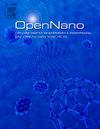溶剂热生长的ZnO/BiOCl光催化剂用于四环素类抗生素的光敏降解
Q2 Pharmacology, Toxicology and Pharmaceutics
引用次数: 0
摘要
在BiOCl形成过程中,通过在反应混合物中加入固体ZnO,可以很容易地构建出基于ZnO/BiOCl的二元光催化剂。然后将双组分异质结应用于日光活性脱除四环素(TC)药物。合成的异质结构主要表现为BiOCl的特征XRD峰,带隙为3.50 eV,而裸BiOCl的带隙为3.30 eV。与合成的BiOCl和ZnO相比,含有0.05 g ZnO/ 1.0 g BiOCl的二元光催化剂(表示为0.05ZnO/BiOCl)的光致发光信号最低。这表明与其他光催化剂相比,二元ZnO/BiOCl在界面处检测到最大的载流子分离率。该结果与在0.05ZnO/BiOCl中检测到的最大光活性具有良好的相关性。在紫外光(135 W,汞灯)照射100 min下,检测到100%的高光催化性能。另外,在240 min内,TC的去除率也达到98%。TC的光降解完全符合一级动力学模型,速率常数为0.0546 min - 1。这比使用ZnO或BiOCl光催化剂得到的结果高1.9倍。经过5次实验后,ZnO/BiOCl二元异质结构仍表现出良好的光降解效率。清道夫实验表明,光生电子是在TC降解过程中起关键作用的主要电子种。本工作强调了一种简单的制备双组分异质结构的方法,该方法具有良好的性能,可用于去除天然水中的TC抗生素。本文章由计算机程序翻译,如有差异,请以英文原文为准。
Solvothermally grown ZnO/BiOCl photocatalyst for solar-light-responsive degradation of tetracycline antibiotic
Binary photocatalyst based on ZnO/BiOCl was constructed very easily using a solvothermal route by addition of solid ZnO to the reaction mixture during the formation of BiOCl. The two-component heterojunction was then applied for sunlight-active removal of tetracycline (TC) drug. The synthesized heterostructure showed mainly the characteristic XRD peaks of BiOCl with the band gap of 3.50 eV, compared to 3.30 eV of the bare BiOCl. The binary photocatalyst comprising 0.05 g of ZnO per 1.0 g of BiOCl (denoted as 0.05ZnO/BiOCl) displayed the lowest photoluminescence signal, compared to the synthesized BiOCl and ZnO. This indicates the greatest carrier separation rate at the interface detected in the binary ZnO/BiOCl, compared to other photocatalysts. The result corelates well with the maximum photoactivity detected in the 0.05ZnO/BiOCl. High photocatalytic performance of 100% was detected under 100 min of UV light (135 W, a mercury lamp). In addition, 98% removal of TC under natural sunlight was also achieved within 240 min. The photodegradation of TC agrees perfectly with the first-order kinetic model providing a rate constant of 0.0546 min–1. This is about 1.9 times higher than those obtained from either ZnO or BiOCl photocatalysts. The binary ZnO/BiOCl heterostructure still exhibits the promising photodegradation efficiency after five runs. The scavenger experiment reveals that the photogenerated electrons are the major species which play a crucial role in TC degradation. This work emphasizes a facile route to fabricate the two-component heterostructure, with promising performance, for removal of TC antibiotic in natural water.
求助全文
通过发布文献求助,成功后即可免费获取论文全文。
去求助
来源期刊

OpenNano
Medicine-Pharmacology (medical)
CiteScore
4.10
自引率
0.00%
发文量
63
审稿时长
50 days
期刊介绍:
OpenNano is an internationally peer-reviewed and open access journal publishing high-quality review articles and original research papers on the burgeoning area of nanopharmaceutics and nanosized delivery systems for drugs, genes, and imaging agents. The Journal publishes basic, translational and clinical research as well as methodological papers and aims to bring together chemists, biochemists, cell biologists, material scientists, pharmaceutical scientists, pharmacologists, clinicians and all others working in this exciting and challenging area.
 求助内容:
求助内容: 应助结果提醒方式:
应助结果提醒方式:


